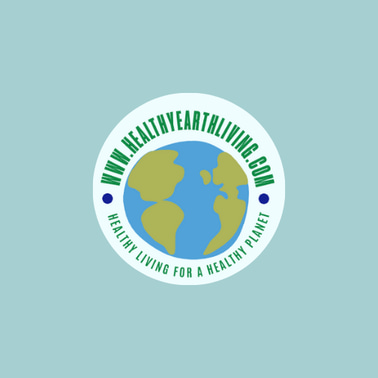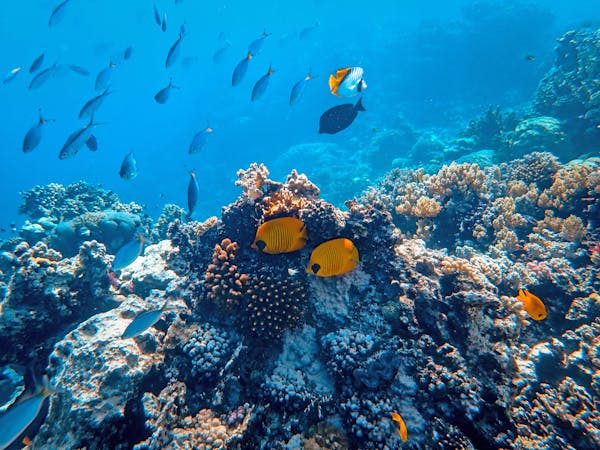Coral Reef Crisis
Janelle Salo RN, MSDT
6/13/20247 min read
Beneath the sparkling blue waters lies a world of wonder and beauty. However, this underwater paradise is facing an unprecedented threat called climate change.
The importance of coral reefs and oceans in supporting marine life and livelihoods
Coral reefs and oceans are like bustling cities for marine animals, providing homes, food, and shelter to various creatures like colorful fish, playful dolphins, and majestic sea turtles. They're fantastic places to explore and also important for our lives too.
Communities rely on oceans and coral reefs for jobs, like fishing and tourism, which help support families and communities worldwide. Protecting these underwater wonders isn't just about saving fish; it's about helping everyone.
What are Coral Reefs?
They may look like plants, but coral reefs are actually animals. Equipped with long, tentacle-like arms that they use to sweep the water, corals use these to catch food like zooplankton or small fish. There are two main types of coral:
Hard Corals are the primary reef-building corals. They contain hard exoskeletons that help to support and build reef structures, which in turn support marine ecology.
Soft Corals are soft and bendable and often resemble plants. Like hard coral, they group themselves together but provide a better habitat for fish and other marine life, which helps build diversity in our oceans.
Addressing climate change to save these precious ecosystems
If we want to save coral reefs and oceans, we've got to tackle climate change head-on. By reducing our carbon footprint, utilizing renewable energy, such as solar panels and windmills, reducing pollution by driving electric or hybrid cars, eating plant-based, and reducing deforestation, we can help slow down the warming of our planet and protect these precious ecosystems. Giving them a fighting chance to survive and thrive for generations.
The Fragile Beauty of Coral Reefs
Coral reefs are vibrant underwater cities bustling with life
From tiny fish darting between the coral branches to giant, graceful eagle rays gliding through the water or frisky eels playing hide and seek within their coral playground, there's always something happening in these vibrant underwater communities. For me, exploring a coral reef is like exploring another planet. There is nothing like it on this earth!
How Coral Reefs Offer Potential Cures
Coral reefs provide medicine through a phenomenon known as bioprospecting, where scientists search for new drugs and treatments in natural organisms. (1) Coral reef organisms, like sponges, soft corals, and algae, contain bioactive compounds with potential medicinal properties. These compounds have been used to develop drugs to treat cancer, inflammation, and bacterial infections. Additionally, coral reefs support diverse marine ecosystems, which contribute to discvering new medicines by providing a rich source of biological diversity to study and explore.
The delicacy of coral reef ecosystems and their vulnerability to environmental stressors
Coral reef ecosystems are delicate and sensitive to environmental changes, making them vulnerable to stressors like ocean warming and pollution. Even small increases in water temperature can trigger coral bleaching, causing widespread damage to these intricate animals. With their fragile balance easily disrupted, it's important to take urgent action to protect coral reefs from further harm and ensure their survival for future generations.


The Toll of Rising Temperatures
How climate change is causing ocean temperatures to rise
Climate change raises ocean temperatures as heat-trapping gases, like carbon dioxide, accumulate in the atmosphere. Heat is transferred to the ocean as the Earth's temperature increases, leading to warmer waters. This temperature rise has significant implications for marine life and ecosystems, including coral reefs, which are particularly sensitive to changes in water temperature.
The phenomenon of coral bleaching
Someone once asked me if I ever cried during a dive, and the answer was a profound yes. The first time I dove on one of my favorite dive sites, I saw that the reef had bleached entirely, with no fish or marine animals in sight. I was devastated. It was a helpless feeling.
Coral bleaching is when corals lose their vibrant colors and turn white due to stress, such as increased water temperatures or pollution. When corals are stressed, they expel the algae in their tissues, which provides them with food and color. Without these algae, the corals become more susceptible to disease and mortality, posing a significant threat to coral reef ecosystems; when the corals bleach, the marine life leaves, and what is left is a devastated ghost town where a thriving underwater community once stood.
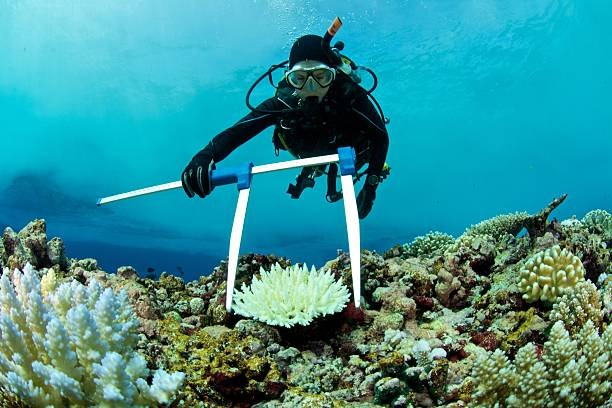

Acidification: A Silent Threat
Ocean acidification
Ocean acidification occurs when the ocean absorbs excess carbon dioxide from the atmosphere, decreasing pH levels. This acidification threatens marine life, particularly organisms like corals, shellfish, and plankton, which rely on calcium carbonate to build their shells and skeletons. As ocean acidity increases, it can hinder these organisms' ability to thrive, ultimately impacting marine ecosystems and the people who depend on them.
Many marine animals, such as parrot fish and turtles, eat algae found on healthy coral reefs. They are an essential part of our ecosystem, helping keep coral reefs healthy and clean. Parrot fish are also significant producers of sand, which helps prevent erosion in coastal communities.


Rising Seas, Sinking Reefs
The link between climate change and rising sea levels
Climate change contributes to rising sea levels through melting glaciers and ice caps and the thermal expansion of seawater. Glaciers and ice sheets melt as global temperatures increase, adding more ocean water. Additionally, warmer water expands, causing the volume of the ocean to increase, which exacerbates sea level rise and poses significant risks to coastal communities worldwide.
The threat of coastal erosion and inundation to coral reefs and coastal communities
As sea levels rise due to climate change, coastal areas are increasingly vulnerable to erosion, which can destroy coral reef habitats and compromise the protection they provide against storms and waves. Additionally, coastal flooding can result in the loss of land, infrastructure, and livelihoods, emphasizing the critical need for protective strategies.
Extreme Weather's Wrath
The intensification of extreme weather events due to climate change
Climate change is causing the intensification of extreme weather events, such as hurricanes, cyclones, typhoons, and flooding due to warmer ocean temperatures and changing atmospheric conditions.
These more frequent and severe storms can wreak havoc on coastal ecosystems like coral reefs, causing physical damage and disrupting delicate ecological balances while posing significant risks to human lives and infrastructure in affected regions.
Communities and marine life are left grappling with the aftermath of extreme weather events, facing widespread destruction of coastal habitats, loss of lives, and economic hardships. For marine ecosystems like coral reefs, the physical damage caused by storms can take thousands of years to recover from, while human communities struggle with rebuilding homes, businesses, and infrastructure. These events highlight the urgent need for climate resilience measures to protect both coastal communities and the marine life they depend on.
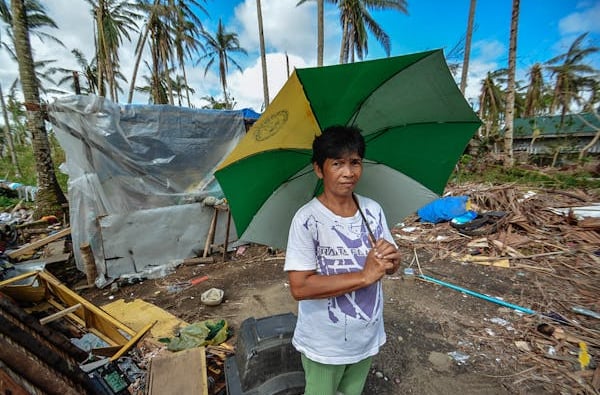

A Call to Action
Lifestyle changes include reducing carbon footprint, conserving water, and supporting renewable energy
Taking action against climate change is crucial to protect our oceans and the diverse lives they support. By reducing carbon emissions, supporting renewable energy sources, and advocating for sustainable practices, we can reduce the impacts of climate change on marine ecosystems and safeguard the health of our oceans for future generations. It's not just about saving the oceans; it's about securing a healthier, more sustainable future for all life on Earth.
It would be a shame for our future generations not to be able to benefit from the beauty and gifts that coral reefs give to us all every day. The thought that future generations won’t be able to see the beauty of a coral reef or benefit from its majesty is a truly terrifying thought. By working together to address climate change, reduce pollution, and promote sustainable practices like:
Reducing plastic
Buy reusable bottled water instead of disposable
Buy reusable canvas grocery bags instead of plastic
Reducing paper
Buy reusable canvas bags instead of using paper
Buy bamboo instead of paper
Eating plant-based
Vegan diet
Vegetarian diet
Prioritize climate action and marine conservation
These policies are essential for addressing our oceans' urgent threats. (2) By implementing measures to reduce greenhouse gas emissions, promote sustainable fisheries management, and establish marine protected areas, governments can help alleviate the impacts of climate change and safeguard marine biodiversity. These policies protect our oceans' health and ensure the long-term sustainability of coastal communities and economies that rely on marine resources.


Bottom Line
Climate change is wreaking havoc on coral reefs and oceans, causing widespread coral bleaching, ocean acidification, and habitat destruction. Rising sea temperatures lead to coral bleaching events, leaving reefs vulnerable to disease and death. Additionally, ocean acidification threatens marine life by disrupting the balance of marine ecosystems, while coastal erosion and extreme weather events further exacerbate the destruction. This highlights the urgent need for action to reduce climate change and protect these vital ecosystems.
While the challenges facing our oceans and coral reefs are daunting, there is hope for a brighter future. We can restore and protect these precious ecosystems through collective action, innovative solutions, and a commitment to conservation.
If every person on this planet would make one change per day in their lives to help diminish climate change, we may be able to buy a few more years on this planet for us and the future of our children and grandchildren.
We can create a world where our oceans and coral reefs thrive again, supporting vibrant marine life and sustainable livelihoods for future generations.
“How we act now will determine the next chapter in the story of life.”-Morgan Freeman


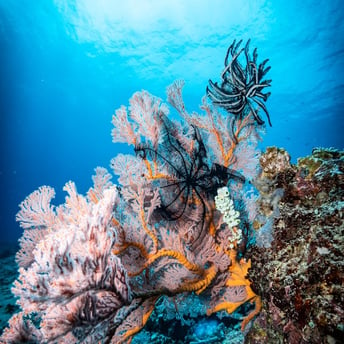
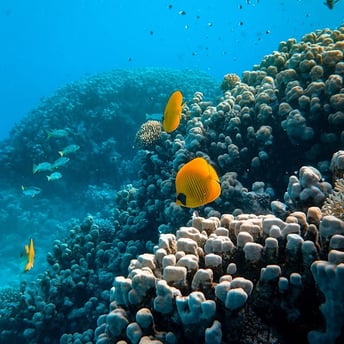
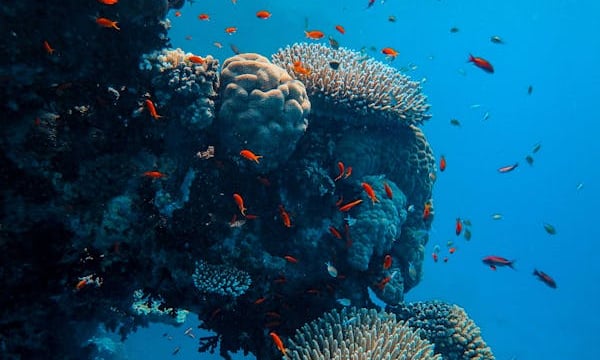

Soft Coral Hard Coral
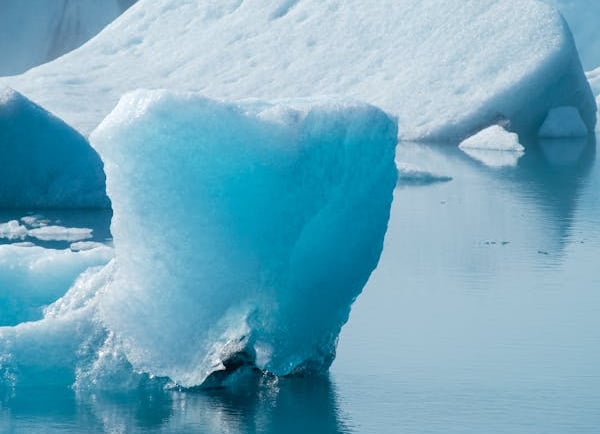

© 2025 Salo Content Writing LLC, all rights reserved
Join the Movement for a Healthier Planet! 🌿
Subscribe now and get your FREE Sustainable Living Checklist! Plus, enjoy weekly articles and delicious plant-based recipes straight to your inbox. Let’s make sustainable living simple and inspiring, one email at a time! 💚✨
